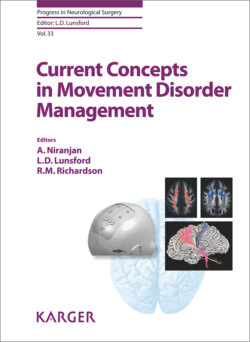Читать книгу Current Concepts in Movement Disorder Management - Группа авторов - Страница 64
Advanced Stage
ОглавлениеAdvanced stage PD is characterized by motor fluctuations and dyskinesias, as well as more severe and disabling nonmotor symptoms. Motor fluctuations can present as “end of dose” or “wearing off” phenomenon as well as “unpredictable off”. “Delayed on” or “no on” after levodopa intake may also occur. Dyskinesias can occur as peak-dose or biphasic (beginning and/or end of dose). Strategies for improving motor fluctuations include increasing the dosage of dopaminergic medication, adding another dopaminergic medication, levodopa dose fragmentation (i.e., dividing it into smaller but more frequent doses), or adding a catechol-O-methyltransferase (COMT) inhibitor or MAO-B inhibitor to prolong the effects of levodopa. Controlled-release levodopa does not reduce the off time more than immediate-release levodopa and, thus, it is usually only recommended for the management of nocturnal akinesia. When oral medications fail to induce a satisfactory improvement of motor fluctuations, invasive treatments should be considered. The subcutaneous infusion of apomorphine and intrajejunal infusion of levodopa/carbidopa intestinal gel (Duodopa®) are well-established alternatives to stereotactic surgery for the advanced phase of the disease. Although less invasive and challenging than brain surgery, both still require compliance by patients and their caregivers [4, 7, 8].
